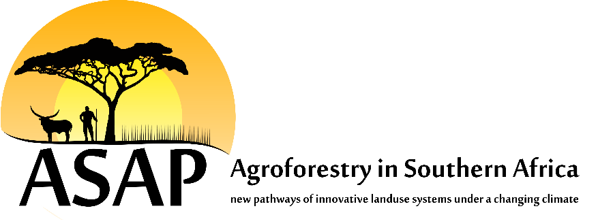
Agroforestry in Southern Africa – new Pathways of innovative land use systems under a changing climate (ASAP)
- Contact:
- Funding:
- Startdate:
12/2019
- Enddate:
11/2022
Southern Africa needs to find innovative land use solutions to adapt to a rapidly changing climate to mitigate predicted impacts on rural livelihoods. ASAP targets the application of agroforestry systems as a potential response. An increase in drought and flooding events and shifts in rainfall patterns might cause loss of productive cropland and hence negatively affect economic, ecological and social aspects of sustainable development. The project aims at investigating the ecosystem services and environmental benefits of agroforestry systems (AFS) as an innovative, multi-purpose land-use management practice in southern Africa. A special focus will be the exploration of human-environment interactions within agroforestry systems and its benefits for rural livelihoods.
A multidisciplinary team aims at further developing knowledge concerning agroforestry systems in southern Africa by applying simple and easily replicable methodology across several study regions to cover a climatic gradient. The project studies the effects of tress within farmed landscapes from the perspective of soil processes, hydrological fluxes and flows, shading and nutrient exports, wind erosion risk and woody biomass production. Nine working packages divided into three thematic areas 1. knowledge transfer and educational transmission, 2. ecosystem services and environmental benefits and 3. human-environment interactions.
The three main goals of the ASAP project are:
- The investigation of ecosystem services and environmental benefits of agroforestry systems as an innovative, multi-purpose land-use management practice in southern Africa.
- An exploration of human-environment interactions within AFS and its benefits for rural livelihoods and local stakeholders.
- A development and increase of German-Southern African research, educational cooperation and capacity building with the bi-directional transfer of knowledge and educational transmission between partner organisations. Providing multiple opportunities for exchange and collaboration at all academic levels.
The “subproject 3: water fluxes” at IWG is focusing on tracing and detecting water redistribution and possible limitations in multiuse landscapes. A combination of high-frequency sensors (soil water content, matric potential and meteorological) and soil physical analyses of soil samples from field campaigns provide the data basis to investigate water movements in the soil.
